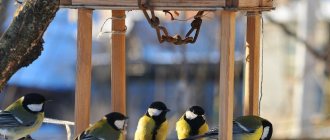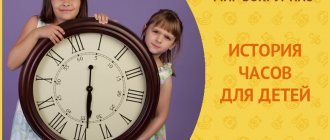Presentation “Travel through fairy tales using ICT” in the preparatory group
Larisa Khokhryakova
Presentation “Journey through fairy tales using ICT” in the preparatory group
Educational area: speech development.
Topic: " Journey through fairy tales "
Age: preparatory group
Goal: to create conditions for consolidating children’s knowledge about fairy tales and their heroes .
1. Improving the skill of word formation of possessive adjectives.
2. Improving the skill of word formation of nouns with plural numerals.
3. Exercise in the use of prepositional-case constructions.
4. Improving the skill of word formation of nouns to the superlative degree.
1. Learn to recognize a fairy tale from illustrations and riddles.
2. Consolidating the ability to decode information.
3. Development of the emotional response of pupils.
4. Learn to answer questions in complete sentences and make judgments .
5. Strengthen orientation in time.
1. Cultivate interest in fairy tales .
2. Improving the ability to interact in a team.
3. Foster a desire to learn new things.
4. Develop the ability to competently express your opinion.
Equipment: multimedia equipment, an envelope with a letter, letters for composing the word “ fairy tale ”
, plates with peas and beans for each child, a cardboard clock for each child.
Presentation “Fabulous Security”
Anna Ivanova
Presentation “Fabulous Security”
Talking about rules with children is not easy. Rules are clear guidelines that limit children's desires and freedoms. Only the correctly chosen form of presenting information allows you to attract the child’s attention and create a desire to follow these rules. Fairy-tale metaphors , imagery and examples of fairy-tale heroes help children understand the danger itself and the way in which it can be avoided. I included fairy tales . which are familiar to children and their plots contain both the threat itself and ways to overcome it.
Rule 1: “Obey your elders.” If you carefully read the fairy tale “Brother Ivanushka and Sister Alyonushka,” this conclusion will suggest itself. It clearly shows that sometimes it pays to heed warnings to avoid trouble. If only because older people have more life experience.
Rule 4: “Do not trust strangers” Pinocchio, who entrusted his gold to Basilio the Cat and Alice the Fox, probably forever learned this rule and helped his children understand this by his example.
Rule 6: “Do not accept food or drinks from strangers.” Not all people have pure thoughts; this is an unpleasant thought, which one way or another we need to familiarize children with in order to protect them from the evil intentions of others. The fairy tale can be a good helper in solving this problem .
Not only teachers, but also parents need to turn to fairy tales for wisdom Let's preserve and protect the world of childhood together .
Attached files:
"Quiz.
Fairytale country" DEPARTMENT OF EDUCATION OF THE CITY OF MOSCOW State budgetary educational institution of the city of Moscow "School with in-depth study. Application “Fairytale Bird” Purpose: to teach children how to make an application according to the pattern, using colored paper of different colors. To generate interest in this type of work.. Presentation of the traffic rules competition “Integration. Security" On October 31, a zonal competition was held in Art. Bokovskaya, where there are 15 teams from the Rostov region, including my presentation. All teams presented.
Presentation on mastering multimedia “My first presentation” 1 slide - title My first presentation “It is not the strongest and not the smartest who survive, but the one who best responds to what is happening.
Presentation “Road Safety” This presentation allows the child to remember, repeat, and consolidate knowledge of the road alphabet. The game form of work is one of the best ways.
On the topic: methodological developments, presentations and notes
This paper presents the development of a project visiting a fairy tale with the application of a final scenario for children of senior preschool age.
Presentation of a project on cognitive and speech development for older preschoolers.
Project activities in the first junior group.
Educational project for children 5-7 years old.
The purpose of the quiz: to find out what fairy tales and what fairy-tale characters children know, to promote the development of children's speech, imagination, thinking, memory; cultivate a love of reading fiction.
I would like to share a presentation of a project implemented in the middle group “Visiting a Fairy Tale.”
Presentation “Fairytale Safety” (How to teach a child safety using folk tales)
Description of the presentation by individual slides:
HOW TO TEACH A CHILD SAFETY RULES BASED ON FOLK TALES Prepared by: Buinitskaya L.A. I/s No. 17, Kostanay
The first fairy tales that our children hear are indeed somewhat like horror stories. But, I think, these are horror stories not for children, but just for parents and surrounding adults
Young children's imagination is still asleep; they do not always understand the meaning of the fairy tale, the danger for the heroes.
The baby is fascinated by the very rhythm of speech, voice, intonation. But our intonations are different! And our voice is alarming! And the small child, at first vaguely, then more and more clearly realizes: something is wrong here. The child listens attentively, and something is deposited in his memory.
Children learn new material (rules of safe behavior) from fairy tale to fairy tale, gradually and step by step, each complements and expands the previous one, illuminates some new situation or problem that a growing person will have to face in real life
HOW TO MAKE A CHILD UNDERSTAND THE MORAL OF A FAIRY TALE, ITS EDUCATIONAL ROLE Comment on what you are talking about. Ask the children questions. Make a conclusion in a form that is accessible to children. Do not rush to flesh out the fairy tale, to deprive it of its magical aura, immediately giving examples from real life. Our task is to lay the foundation for security.
It is through play that they learn about the world and become accustomed to it. So play together using children's toys.
Appeal to our children: Dear, our children, remember. Grown people who love you want only the best for you. They have life experience and will help you find the right solution in any situation. But, unfortunately, children do not always listen to the adults close to them, and what can happen from this, they tell us fairy tales...
Works of art for children 1-3 years old Folk tales: “Kolobok” (Russian fairy tale), “Turnip” (Ushinsky’s model) - Russian fairy tale); “Why does a cat wash itself after eating” (Kazakh fairy tale), “Masha and the Bear” (Russian fairy tale). "Chicken Ryaba." “How a goat built a hut” (arranged by M. Bulatov) Poems: V. Berestov “Sick Doll”, A. Barto “Bear”, “Bull”, “Ball”, “Elephant” (from the cycle “Toys”) S. Marshak “Elephant” (from the series “Children in a Cage”) Alexandrov “One, two, three, four, five”, “Hide and Seek”; Stories: E. Charushin “Chicken”; K. Chukovsky “Chicken”; V. Suteev. “Chicken and Duckling”, “Who said meow?”
Works of art for children 3-4 years old “Little Bunny” (Kazakh folk tale); "The Three Bears" (Russian folk tale); “Fear has big eyes” (arranged by Serova). “Little Camel” (Kazakh folk tale); “Masha and the Bear” (Russian folk tale); “Puff” (Belarusian folk tale, arrangement by N. Malyakina); “Cat, rooster and fox” (arranged by M. Bogolyubskaya). “Zayushkina’s Hut” (model by O. Kapitsa); “Visiting the Sun” (Slovak fairy tale, trans. S. Mogilevskaya) “Snow Maiden” (arranged by I. Karnaukhova); “A fox with a rolling pin” (arranged by K.D. Ushinsky); “The Fox and the Hare”, “Kot Kotofeevich” (retold by O. Kapitsa). “Geese-swans” (model by M. Bulatov); Cockerel and bean seed” (sample by M. Serova); “Sister Fox and Gray Wolf” (arranged by M. Bulatov) Poems: N. Karbozin “Doctor”. S. Marshak. "The Tale of a Stupid Mouse"; “Dirty Girl” (English song translated by S. Marshak); S. Mikhalkov. “About a girl who didn’t eat well”, “Stubborn frog”; I. Tokmakova “Porridge”, “Oh yes soup!”; G. Lagzdyn “Without Mom”, “Why is Yegorka sad?”,
Works of art for children 5-6 years old “The Fox and the Goat” (Kazakh fairy tale) “The Cat, the Rooster and the Fox” (Russian folk tale) “The Stupid Wolf” (folk tale) “The Wise Girl” (Kazakh fairy tale) “The Heart” (parable) . “Fear has big eyes” (Russian folk tale) “The Three Little Pigs” (English folk tale), “Little Red Riding Hood” (C. Pierrot) “Ayoga” Nanai (folk tale), “Three Sisters” (Tatar folk tale). “Pykh” (Belarusian folk tale), “Not by force, but by mind” (Belarusian folk tale), “Cuckoo” (Nenets folk tale). “Boasting Hare”, “Four Friends” (Kazakh fairy tale) “Resourceful Boy”, “Snow Maiden”, “Sister Fox and Gray Wolf”, “Sister Alyonushka and Brother Ivanushka”, “Fox and Hare”. “Two Greedy Little Bears” (Hungarian folk tale), “The Man and the Bear”, “At the Command of the Pike”. “If you hurry, you will make people laugh” (Polish folk tale). Kazakh, Russian proverbs, sayings and riddles. "Crows", "Trickster", "Rooster".
Material number: DB-482571
Didn't find what you were looking for?
You might be interested in these courses:
Leave your comment
Gift certificates
Responsibility for resolving any controversial issues regarding the materials themselves and their contents is taken by the users who posted the material on the site. However, the site administration is ready to provide all possible support in resolving any issues related to the work and content of the site. If you notice that materials are being used illegally on this site, please notify the site administration using the feedback form.
All materials posted on the site were created by the authors of the site or posted by users of the site and are presented on the site for informational purposes only. Copyrights for materials belong to their legal authors. Partial or complete copying of site materials without written permission from the site administration is prohibited! The opinion of the administration may not coincide with the point of view of the authors.
Source
Entertainment in the middle group with a presentation: Journey into the world of fairy tales
Entertainment summary: “Journey into the world of fairy tales”
Author: Tatyana Nikolaevna Potlova Place of work: MDOU “Kindergarten of compensatory type No. 82”, Saratov Age group: secondary Educational field: “Physical development” Purpose: to create conditions for the presentation of Russian folk heroes fairy tales through outdoor games. Objectives: • To develop the ability to correctly perform basic movements: move in a column one at a time, step by step, run, keep your distance, jump on two legs, crawl, help reinforce the rules in outdoor games. • Develop balance, coordination, gross and fine motor skills. • Instill an interest in physical education, evoke an emotional response in children and a desire to participate in joint activities, cultivate an interest in Russian folk tales and folklore. • Prevention of flat feet, colds. Types of activities: motor, play, communication. Forms of organization: group. Forms of implementation of children's activities: games with speech accompaniment. Equipment: multimedia projector, slides with fairy tale characters, massage paths, massage mats, gymnastic bench, hoops, tambourine, masks for children, music recordings. Progress of entertainment:
I Introductory part
The children are met by the teacher.
Slide No. 1 (title of the lesson). Educator:
Hello guys!
Today we have guests. Let's say hello to them. Communicative game “Hello” words M. Kartu-other. Hello, palms! - Stretch out your arms, turn your palms up. Clap-clap-clap! - 3 claps. Hello legs! - Spring. Top-top-top! - They stomp their feet. Hello cheeks! - They stroke their cheeks with their palms. Plop-plop-plop! - Lightly pat the cheeks 3 times. Chubby cheeks! - Circular movements with fists on the cheeks. Plop-plop-plop! - Lightly pat the cheeks 3 times. Hello sponges! - Shake their head left and right. Smack-smack-smack! Smack lips 3 times. Hello, teeth! - Shake their head left and right. Click-click-click! - Click their teeth 3 times. Hello, my nose! - Stroke your nose with your palm. Beep-beep-beep! - Press on the nose with your index finger. Hello, guests! - Extend their arms forward, palms up. Educator:
Guys, tell me, do you like fairy tales?
What fairy tales do you know? Slide number 2 (fairy tales). Educator:
Well done guys.
And now, we invite you to go to a fairyland and meet characters from fairy tales you know. Ready? Educator:
Guys, what do you think you can use to get to fairyland?
And I suggest you go there on a magic carpet. Slide No. 3 (flying carpet) Let's say the magic words: “The carpet is an airplane, Take us on a flight There is a door to a fairy tale in front of us, Open it quickly.” Educator:
Turn behind me, arms to the sides, back straight, head not lowered. Let's fly.
II Main part
Educator:
So you and I have arrived in a fairyland!
Look what a beautiful path. Let's walk along it and see what's ahead. Slide number 4 (path). There's a bear on the screen ahead. Slide number 5 (bear). Educator:
Oh, guys, who is this?
Educator:
What fairy tale do you think he is from?
Educator:
That's right, guys.
And I suggest you play the game “Bear in the Forest.” Outdoor game “At the bear in the forest.” Educator:
Well done, guys.
Now, let's go up to the bear and show him how we can restore our breathing. Breathing exercises “Let’s blow on the shoulder.” Let's blow on the shoulder, let's blow on the other, Let's blow on the stomach, as the pipe becomes the mouth, And then on the clouds and stop for now! They quickly reached out and smiled at everyone. Educator:
Well done guys, it’s time for us to move on.
Ahead of us is a swamp. Slide number 6 (swamp and frogs croaking) and in order not to fall through you need to jump over the bumps. Educator: Oh, guys, what is this? (On the screen ahead is Baba Yaga's hut). Slide number 7. Educator:
Who do you think lives in it?
Educator:
That's right, guys, what fairy tale is it from?
Remember, she also had angry geese. Slide number 8 (geese-swans). Educator:
Of course, this is the fairy tale “Geese and Swans”.
And you and I will play a game. Outdoor game "Geese, geese." Educator:
Well done, guys, now let's go to the screen, straighten our backs and sing about animals.
Logori Zheleznovykh. Giraffes have spots, spots, spots, spots everywhere. Slide No. 9 (giraffe) Giraffes have spots, spots, spots, spots everywhere. We clap our palms all over the body. On the forehead, ears, neck, elbows, noses, bellies, knees and socks. With both index fingers we touch the corresponding parts of the body. Elephants have folds, folds, folds, folds everywhere. Slide number 10 (elephant). Elephants have folds, folds, folds, folds everywhere. We pinch ourselves, as if picking up folds. On the forehead, ears, neck, elbows, noses, bellies, knees and socks. With both index fingers we touch the corresponding parts of the body. Kittens have fur, fur, fur, fur everywhere. Slide number 11 (kitten). Kittens have fur, fur, fur, fur everywhere. We stroke ourselves, as if smoothing fur. On the forehead, ears, neck, elbows, noses, bellies, knees and socks. With both index fingers we touch the corresponding parts of the body. And the zebra has stripes, there are stripes everywhere. Slide number 12 (zebra). And the zebra has stripes, there are stripes everywhere. We draw the edges of our palms along the body (draw stripes). On the forehead, ears, neck, elbows, noses, bellies, knees and socks. With both index fingers we touch the corresponding parts of the body. Educator:
Guys, it’s time for us to move on.
And ahead of us is a mountain river, Slide No. 13 (river and sounds of water), we need to crawl across it on a bridge. Educator:
Oh, guys, look, it's a bunny.
Slide number 14 (the bunny is crying). Why do you think he is crying? Educator:
Of course, the fox offended him. What fairy tale is he from? "Zaika's hut." And now we're going to play a game. Outdoor game "Homeless Hare".
III Final part
Educator:
Now let's sit down and relax.
Slide number 15 (clouds). Relaxation “Travel on a Cloud”. Guys, let's close our eyes. Imagine that you are flying on a white fluffy cloud. Feel your legs and back resting comfortably on this large cloud cushion. Your cloud slowly rises into the blue sky. Feel the wind blowing over your faces. Here, high in the sky, everything is calm and quiet. Here you feel completely calm and happy. Something wonderful and magical can happen here. You well. And now the clouds are carrying us back to kindergarten. We have arrived, come off the cloud. Open your eyes. Here we are in kindergarten. Educator:
Guys, did you like the trip? How did we get there? How did you return back? Who did we meet in fairyland? Now let's say goodbye to the guests.
Presentation on the topic: Entertainment in the middle group “Journey to the world of fairy tales”
We recommend watching:
Crosswords based on Russian folk tales for children of the middle group (4-5 years old) Scenario of a game program based on fairy tales in kindergarten for the middle group Winter physical education based on fairy tales. Scenario for the middle group Thematic day in the middle group “Visiting a fairy tale.”
Similar articles:
Dramatization of the fairy tale “Kolobok” in the middle group
Scenario of the fairy tale “Zaykina’s hut” in kindergarten. Middle group
Presentation “Formation of the foundations of safe behavior based on Russian folk tales”
Description of the presentation by individual slides:
Formation of the foundations of safe behavior based on the material of Russian folk tales Educator of the 1st category MBDOU No. 27 “Thumbelina” Kovgan Yulia Igorevna Zapolyarny
OBJECTIVES: Learn to behave correctly in dangerous situations; To develop in children a sense of courage and resourcefulness when danger arises; Instill in children a desire to help others if they are in trouble.
Fairy tales are a textbook from which a little person begins to learn to live. These tales are allegorical only in form, but their content is the life experience of many generations. Fairy tales have many layers, and one of the layers is the very safety lessons that our children must learn.
Kolobok Is it possible to leave without parental permission and go for a walk alone? Is it possible to talk to strangers and why? NO!
In what fairy tale did the character very skillfully pretend to be a close relative and achieve the implementation of his evil plan?
A wolf and seven kids will teach a child not to be gullible and not to open doors to strangers, as well as to tell everyone that there is no one at home.
Rooster and Fox You need to call for help if you are in trouble or stopped by a stranger.
Sister Alyonushka and brother Ivanushka Will teach children that they must listen to their elders.
Independent activities of children
Thank you for your attention.
Material number: DB-299510
Didn't find what you were looking for?
You might be interested in these courses:






